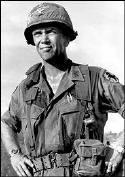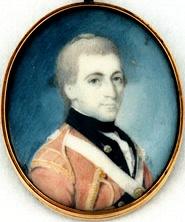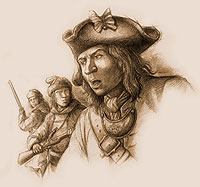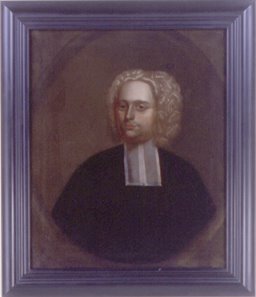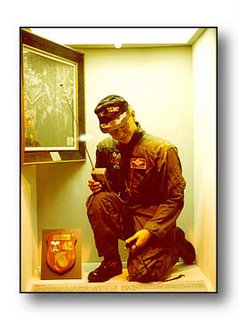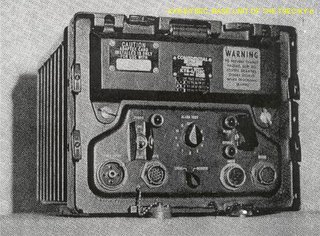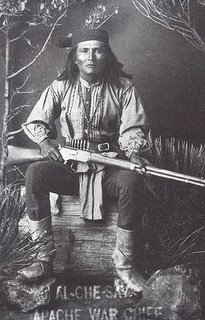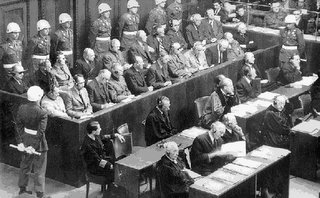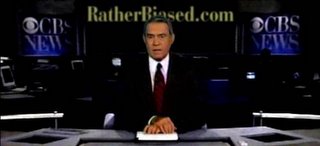
Dan Rather has a problem with the truth. He never got caught on this one, though. Craig
September 15, 2004, 5:52 a.m.
The First Rathergate
The CBS anchor’s precarious relationship with the truth.
By Anne Morse
Critics are calling the media scandal over the Jerry Killian forgeries "Rathergate." But to thousands of Vietnam veterans, the real Rathergate took place 16 years ago when Dan Rather successfully foisted a fraud onto the American people. Then, unlike now, there was no blogosphere to expose him.
On June 2, 1988, CBS aired an hour-long special titled CBS Reports: The Wall Within, which CBS trumpeted as the "rebirth of the TV documentary." It purported to tell the true story of Vietnam through the eyes of six of the men who fought there. And what terrible stories they had to tell.
"I think I was one of the highest trained, underpaid, eighteen-cent-an-hour assassins ever put together by a team of people who knew exactly what they were looking for," said Steve Southards, a Navy SEAL who told Rather he had escaped society to live in the forests of Washington state. Under Rather's gentle coaxing, Southards described slaughtering Vietnamese civilians, making his work appear to be that of the North Vietnamese.
"You're telling me that you went into the village, killed people, burned part of the village, then made it appear that the other side had done this?" Rather asked.
"Yeah," Steve replied. "It was kill VC, and I was good at what I did."
Steve arrived home "in a straitjacket, addicted to alcohol and drugs" knowing that "combat had made him different," Rather intoned. "He asked for help; that's unusual, many vets don't. They hold back until they explode."
Rather then moved on to suicidal veteran named George Grule, who was stationed on the aircraft carrier Ticonderoga off the coast of Vietnam during a secret mission. Grule described the horror of watching a friend walk into the spinning propeller of a plane, which chopped him to pieces and sprayed Grule with his blood. The memory of this trauma left Grule, like Steve, unable to function in normal society.
Neither could Mikal Rice, who broke down as he described a grenade attack at Cam Ranh Bay, which blew in half the body of a buddy, "Sergeant Call." "He died in my arms," Rice tearfully recalled. Rice described how the sound of thunder and cars backfiring would regularly trigger his terrible memories.
Most horrific of all were the memories of Terry Bradley, a "fighting sergeant" who told Rather he had skinned alive 50 Vietnamese men, women, and children in one hour and stacked their bodies in piles. "Could you do this for one hour of your life, you stack up every way a body could be mangled, up into a body, an arm, a tit, an eyeball . . . Imagine us over there for a year and doing it intensely," Bradley said. "That is sick."
"You've got to be angry about it," Rather replied. "I'm suicidal about it," Bradley responded.
Post Traumatic Stress Disorder, drug abuse, alcoholism, joblessness, homelessness, suicidal thoughts: These tattered warriors suffered from them all.
The The Wall Within was hailed by critics who — like the Washington Post's Tom Shales — gushed that the documentary was "extraordinarily powerful." There was just one problem: Almost none of it was true.
The truth was uncovered by B.G. Burkett, a Vietnam veteran and author of Stolen Valor: How the Vietnam Generation Was Robbed of its Heroes and its History (with Glenna Whitley). Burkett discovered that only one of the vets had actually served in combat. Steve Southards, who'd claimed to be a 16-year-old Navy SEAL assassin, had actually served as an equipment repairman stationed far from combat. Later transferred to Subic Bay in the Philippines, Steve spent most of his time in the brig for repeatedly going AWOL.
And George Gruel, who claimed he was traumatized by the sight of his friend being chopped to pieces by a propeller? Navy records reveal that a propeller accident did take place on the Ticonderoga when Gruel was aboard — but that he wasn't around when it happened. During Gruel's tour, the ship had been converted to an antisubmarine warfare carrier which operated, not on "secret mission" along the Vietnam coast, but on training missions off the California coastline. Nevertheless, Burkett notes, Gruel receives $1,952 a month from the Veterans Administration for "psychological trauma" related to an event he only heard about.
Mikal Rice — the anguished vet who claimed to have cradled his dying buddy in his arms — actually spent his tour as a guard with an MP company at Cam Ranh Bay. He never saw combat. Neither did Terry Bradley, who was not the "fighting sergeant" he'd claimed to be. Instead, military records reveal he served as an ammo handler in the 25th Infantry Division and spent nearly a year in the stockade for being AWOL. That's good news for the hundreds of Vietnamese civilians Bradley claimed to have slaughtered. But it doesn't say much for Dan Rather's credibility.
As Burkett notes, the records of all of these vets were easily checkable through Freedom of Information Act requests of their military records — something Rather and his producers simply didn't bother to do. They accepted at face value the lurid tales of atrocities committed in Vietnam and the stories of criminal behavior, drug addiction, and despair at home.
Perhaps that's because this is what they wanted to believe. Says Burkett: The Wall Within "precisely fit what Americans have grown to believe about the Vietnam War and its veterans: They routinely committed war crimes. They came home from an immoral war traumatized, vilified, then pitied. Jobless, homeless, addicted, suicidal, they remain afflicted by inner conflicts, stranded on the fringes of society."
Burkett, who did check the records of the vets Rather interviewed, shared his discoveries with CBS. So did Thomas Turnage, then administrator of the Veterans Administration, who was appalled by Rather's use of bogus statistics on the rates of suicide, homelessness, and mental illness among Vietnam veterans — statistics that can also be easily checked. Rather initially refused to comment, and CBS spokeswoman Kim Akhtar said, "The producers stand behind their story. They had enough proof of who they are." For his part, CBS president Howard Stringer defended the network with irrelevancies. "Your criticisms were not shared by a vast majority of our viewers," he sniffed, adding that "CBS News and its affiliates received acclaim from most quarters . . . In sum, this was a broadcast of which we at CBS News and I personally am proud. There are no apologies to make."
Sarah Lee Pilley, who ran a restaurant in Colville, Washington where the CBS crew dined while filming The Wall Within, would not agree. The wife of a retired Marine lieutenant colonel who saw combat in Vietnam, Pilley, said she "got the distinct feeling that CBS had a story they had decided on before they left New York." After interviewing 87 Vietnam veterans, CBS chose the "four or five saddest cases to put on the film," Pilley said. "The factual part of it didn't seem to matter as long as they captured the high drama and emotion that these few individuals offered. We felt all along that CBS committed tremendous exploitation of some very sick individuals."
Why would Dan Rather do such a thing? Partly because the stories of deranged, trip-wire vets is much more dramatic than the true story: That most Vietnam veterans came home to live normal, productive, happy lives. Second, Rather apparently wanted the story of whacked-out Vietnam veterans to be true — just as he now wants the Jerry Killian story to be true.
Or maybe — despite a preponderance of the evidence — he considered the sources of these tales of Vietnam atrocities "unimpeachable." As angry Vietnam veterans began calling CBS to complain about the factual inaccuracies of The Wall Within, Perry Wolff, the executive producer who wrote the documentary, claimed that "No one has attacked us on the facts." Despite the growing evidence that he'd been had, Rather also continued to defend the documentary — which is now part of CBS's video history series on the Vietnam War.
Perhaps Vietnam veterans ought to take a page out of the book of the Swift Boat Veterans for Truth and air television ads exposing Rather's deceits — something along the lines of: "Dan Rather lied about his Vietnam documentary. I know. I was there. I saw what happened. When the chips were down, you could not count on Dan Rather."
Certainly, we cannot count on him for the truth. During a 1993 speech to the Radio and Television News Directors Association, Rather criticized his colleagues for competing with entertainment shows for "dead bodies, mayhem, and lurid tales." "We should all be ashamed of what we have and have not done, measured against what we could do," Rather said.
Thousands of Vietnam veterans — not to mention the Bush campaign — would agree.
I have met all kinds of kooks claiming to be Viet Vets, talking about how awful it was, and about all the evil they had seen in Vietnam. Most claimed to be Marines. Most were not, and were lying through their teeth. And of course someone who was not there would have no idea that they were lying. And I am sure most people believed Rather's BS above.
At least Jane Fonda eventually apologized, sort of. I am still waiting for Dan. I guess his apology for the Bush forgery will have to do.
Craig


